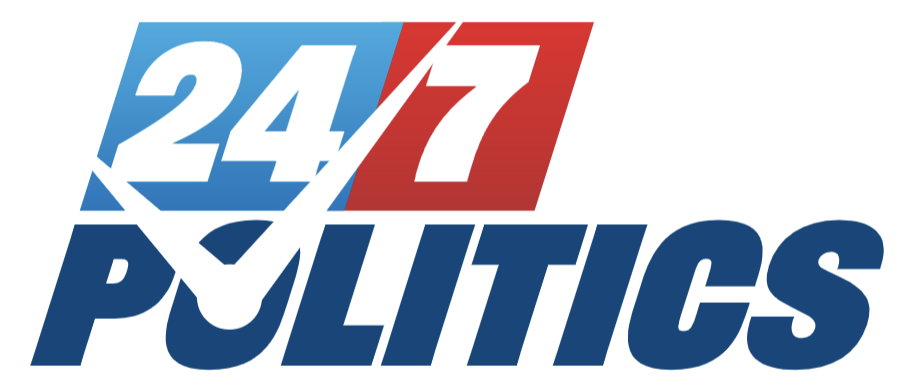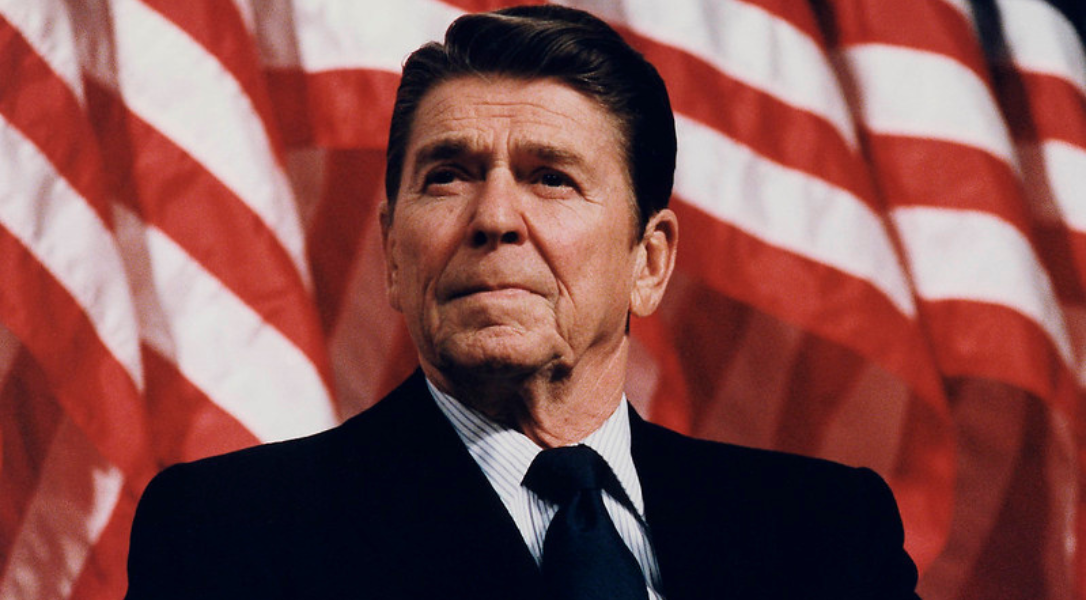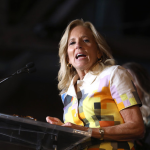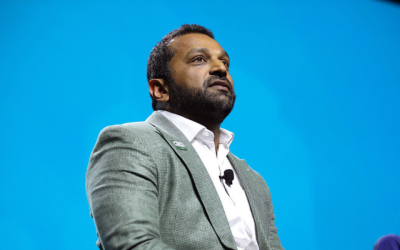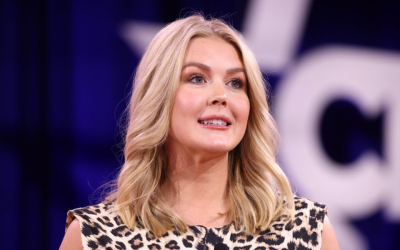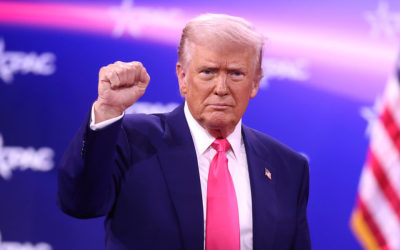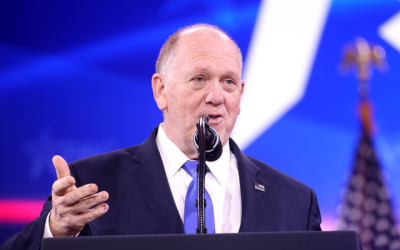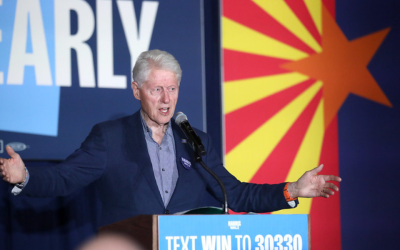On February 6, 1911, in the small town of Tampico, Illinois, a future American icon was born.
Known for his career as a Hollywood actor, two terms as Governor, and ultimately as President of the United States, this man left a legacy that reshaped both the nation’s economy and global politics.
From battling communism to championing free-market economics, his leadership continues to be remembered and revered by millions.
A Transformational President
Ronald Reagan is undoubtedly remembered best as our nation’s 40th President.
After graduating from Eureka College in 1932, Reagan started a career in radio with sports broadcasting, eventually becoming famous for his coverage of Chicago Cubs games.
In 1936, he auditioned and did a screen test for Warner Brothers Studios, which launched his film career that lasted over 30 years.
Political Beginnings
Ronald Reagan began his political career as a Democrat, professing a strong admiration of and putting his support behind Democrat President Franklin D. Roosevelt.
FDR died in office in April 1945, and VP Harry S. Truman took the reins as our nation’s leader for the remainder of World War II.
Reagan was a vocal supporter of Truman throughout his two terms. After WWII, there was a rise in the support for communist ideals in Hollywood in the 1950s.
He used his position as President of the Screen Actors Guild (SAG) to denounce the movement and rallied many of his friends and associates against those in Hollywood that supported the movement.
Reagan would eventually be called to testify before the House Un-American Activities Committee associated with the Red Scare and McCarthyism.
A Shift to the Right
Reagan’s move towards the conservative side of politics began with his support of Presidential candidate Dwight D. Eisenhower in 1952, followed by Richard Nixon in 1960.
In 1964, Reagan delivered a speech titled, “A Time for Choosing,” for the Barry Goldwater campaign that touted the importance of smaller government, saying that “the Founding Fathers knew a government can’t control the economy without controlling people. And they knew when a government sets out to do that, it must use force and coercion to achieve its purpose. So we have come to a time for choosing.”
Governor of California
Reagan announced his intent to run for Governor of California as a Republican candidate in 1966. The former actor-turned-politician presented himself as a “political outsider” and a hater of big government.
He won his first election and became the 33rd Governor of the State of California in 1967, and was elected to serve a second term in 1970.
In his two terms as Governor, he is credited with implementing programs that imposed increased taxes on banks, corporate profits, alcohol, and cigarettes while lowering taxes for citizens. He cut wasteful spending and government offices within the state. And he introduced laws that helped reduce crime and implemented welfare reform.
He ended his second term with the state having a surplus budget.
When asked to run for a 3rd term in 1974, he declined.
Aiming for the Top
In November 1975, Reagan announced that he was throwing his name into the ring for the Republican nomination for Presidential candidate.
He was competing with the unelected incumbent Republican President, Gerald Ford, who assumed the position under the 25th Amendment after Richard Nixon resigned from the Presidency, but he failed to get the party nomination.
Ford would go on to lose the 1976 election to Democratic candidate Jimmy Carter.
Anti-Carter
Ronald Reagan was very vocal about his opposition to President Carter’s policies during his term. He felt that Carter was weak and weakened the U.S. economy locally and the country’s standing around the world.
As 1980 was approaching, he again sought the Republican nomination for President. He campaigned on Carter’s failure to control high interest rates and inflation. He derided the President for signing the Panama Canal Treaty and as being a significant reason for the 1979 oil crisis.
This time Reagan was successful. He was on the ticket as the Republican candidate for President.
In November 1979, the American embassy in Tehran, Iran, was overrun by Muslim extremists, and 53 U.S. students and a few diplomats were taken hostage. This dominated the global news, especially when the Shah of Iran was deposed, and Islamic radicals took over the rule of Iran.
Carter’s failure to secure the release of the American hostages is seen as a key factor for him losing the election.
Ronald Reagan, Our 40th President
Reagan won the election by winning over 44 states and receiving 489 electoral and garnering 51% of the popular vote.
Reagan is remembered as President for his economic policies that he achieved through increased defense spending that created thousands of jobs. He slowed government spending in many areas and reduced the federal income tax, almost doubling personal deductions. And he was able to significantly reduce inflation through free market economics.
Reagan also instigated an enhanced “War on Drugs” in response to a nationwide “crack epidemic” that was taking its toll on mostly urban populations.
He was often blamed for an escalation of the Cold War due to his increased focus on military spending and development of new weapons, including the Strategic Defense Initiative, nicknamed the Star Wars program.
In response to the build-up, Soviet leader Yuri Andropov stated that Reagan was leading the world down “an extremely dangerous path.”
Reagan viewed the Soviet empire as an “evil empire.” Addressing the British parliament in 1982, the President said the march of “freedom and democracy will leave Marxism and Leninism on the ash heap of history.”
Assassination Attempt
On March 30, 1981, Reagan gave a speech at the Washington Hilton to members of the AFL-CIO. As he was returning to his limousine, a crazed man named John Hinckley opened fire on the President’s group, seriously wounding Reagan and three others.
Reagan was rushed to the hospital with serious internal bleeding, but it was quickly brought under control, and the President’s condition began to stabilize.
Press Secretary James Brady was struck in the head and suffered severe brain damage as a result and was permanently disabled. The other two wounded recovered completely.
Reagan remained hospitalized until April 11, but made a full recovery.
Hinckley was later tried and found not guilty by reason of insanity of the crime, but was committed to a psychiatric facility until he was deemed fit for release on September 10, 2016.
Elected to a Second Term in 1984
When Ronald Reagan was elected to a second term in 1984, he continued his initiatives to stabilize the U.S. economy while continuing to increase our military might as the tensions of the Cold War continued to escalate.
In May 1986, Reagan signed the “Firearms Protection Act,” which amended the Gun Control Act of 1968 and strengthened the definition of the Second Amendment, further protecting the rights of gun ownership for American citizens.
He was attacked for this action by the Left, who tried to use his assassination attempt and the crippling of James Brady as a rallying cry. Reagan was a supporter of lawful gun ownership.
He didn’t blame the gun. He blamed the criminal, and he asserted the rights of lawful Americans to own firearms for protection, hunting, sport, etc., was indeed an “inalienable right” guaranteed by the U.S. Constitution.
American Prosperity
With Reagan’s second term, the nation continued to see economic growth. The GNP grew slowly but steadily, reaching 4.5% by 1989. Unemployment rates dropped by three percent. Inflation stabilized, and lower interest rates led to an increase in consumer spending, and the real estate and retail industries grew.
This was largely attributed to his tax policies and rate cuts. The marginal rate was around 70% when he first took office, but by the end of his second term, it had dropped to 28%.
Issues
Like any President, Reagan had to deal with many domestic and foreign issues that negatively impacted the nation and the world.
There was the AIDS Crisis that began wreaking havoc on the homosexual community in the early ‘80s, and while the President did not support the lifestyle, he recognized the toll that the disease could take if something wasn’t done. While supporting global efforts to find a cure, Reagan also spoke out against AIDS and implemented programs that were focused on prevention since there was no known cure at the time.
He also grieved with and addressed the nation after the Challenger shuttle disaster on January 28, 1986.
He accepted blame for the Iran-Contra affair happening under his administration, and the world saw a rise in terrorist acts targeting the U.S. overseas.
Foreign Policy
If anything can be said about his two terms as President, it would be that Reagan took a firm stance for America through his policies.
He had success and failures for sure, but his hardline stance was trying to control the expansion of communism around the world.
He implemented programs that offered logistical and financial support to anti-communist operations in places like Angola, Afghanistan, and Nicaragua.
And he developed a relationship with Soviet President Mikhail Gorbachev that bordered on friendship. The two met several times to discuss the risks of the global Cold War and its devastating consequences. At a conference in Geneva, Reagan expressed a hardline stance to Gorbachev, stating, “Mr. General Secretary, you can never win an all-out arms race with the United States because we will always have the ability to outspend you.”
The Soviet economy was already in trouble, and the Arms Race was a significant part of their troubles. Reagan stated after the Geneva meeting that Gorbachev “. . . was intellectually honest about what the economic system had produced in Russia, in the satellite states that comprised the Soviet Union, and he knew that more of the same was undesirable.”
Reagan is probably best remembered for his Soviet dealings when he attended a NATO conference in West Berlin. He was addressing the crowd gathered at the Brandenburg Gate when he gave what is undoubtedly his most famous speech.
Behind me stands a wall that encircles the free sectors of this city, part of a vast system of barriers that divides the entire continent of Europe . . . Standing before the Brandenburg Gate, every man is a German, separated from his fellow men. Every man is a Berliner, forced to look upon a scar . . . As long as this gate is closed, as long as this scar of a wall is permitted to stand, it is not the German question alone that remains open, but the question of freedom for all mankind . . .
General Secretary Gorbachev, if you seek peace, if you seek prosperity for the Soviet Union and Eastern Europe, if you seek liberalization, come here to this gate.
Mr. Gorbachev, open this gate!
Mr. Gorbachev, tear down this wall!
Reagan was paving the way for an end to the Cold War and the end of the Soviet Union. While the downfall did not happen during his time in office, he was certainly responsible for hammering several of the final nails in the coffin.
Are you enjoying 24/7’s deep dives into recent and not-so-recent history? Would you like to see more stories like this one? If so, reply back to [email protected] and let our Editorial Team hear from you!
Also, be sure to sign up for 24/7’s Exclusive “Choose the News” Focus Group for your chance to vote on and submit commentary in our Featured Story each week!
